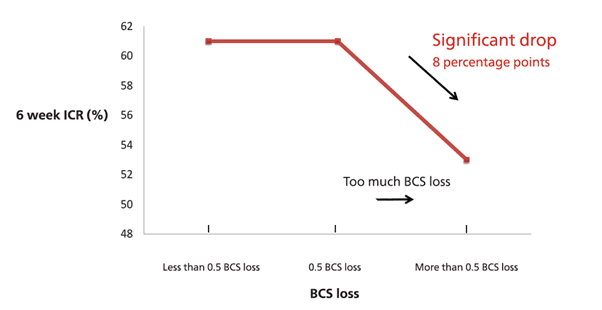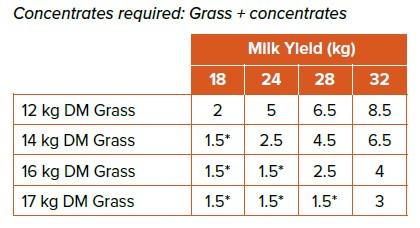Get a 24 hour weather forecast
You can click the button below to use your browser's location services to set your location
Find Your LocationOr you can enter the town you reside in to check the weather there.
As cows approach the breeding season, they need to be on a rising plane of nutrition.
Low milk proteins are signs that your cows are NOT on a rising plane of nutrition.
Currently milk proteins across the Dairygold herd are lower than the 4 year average and the low point is more sustained than previous years. This type of protein curve is an indication of sustained low energy intakes by our cows.
Periods of excessive and extended low energy intakes lead to BCS loss and poor fertility performance.
How to tackle low energy intakes:
*grass alone does not meet a cow’s daily requirement for calcium, phosphorus, magnesium, zinc, iodine and selenium. Even though a cow’s energy demand might not require concentrates, feeding 1.5kg of concentrates at grass is the cheapest and most effective method of supplying these minerals.
We have placed cookies on your computer to help make this website better. If you continue to use this site we will assume you are happy with this.



